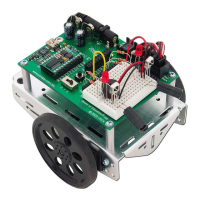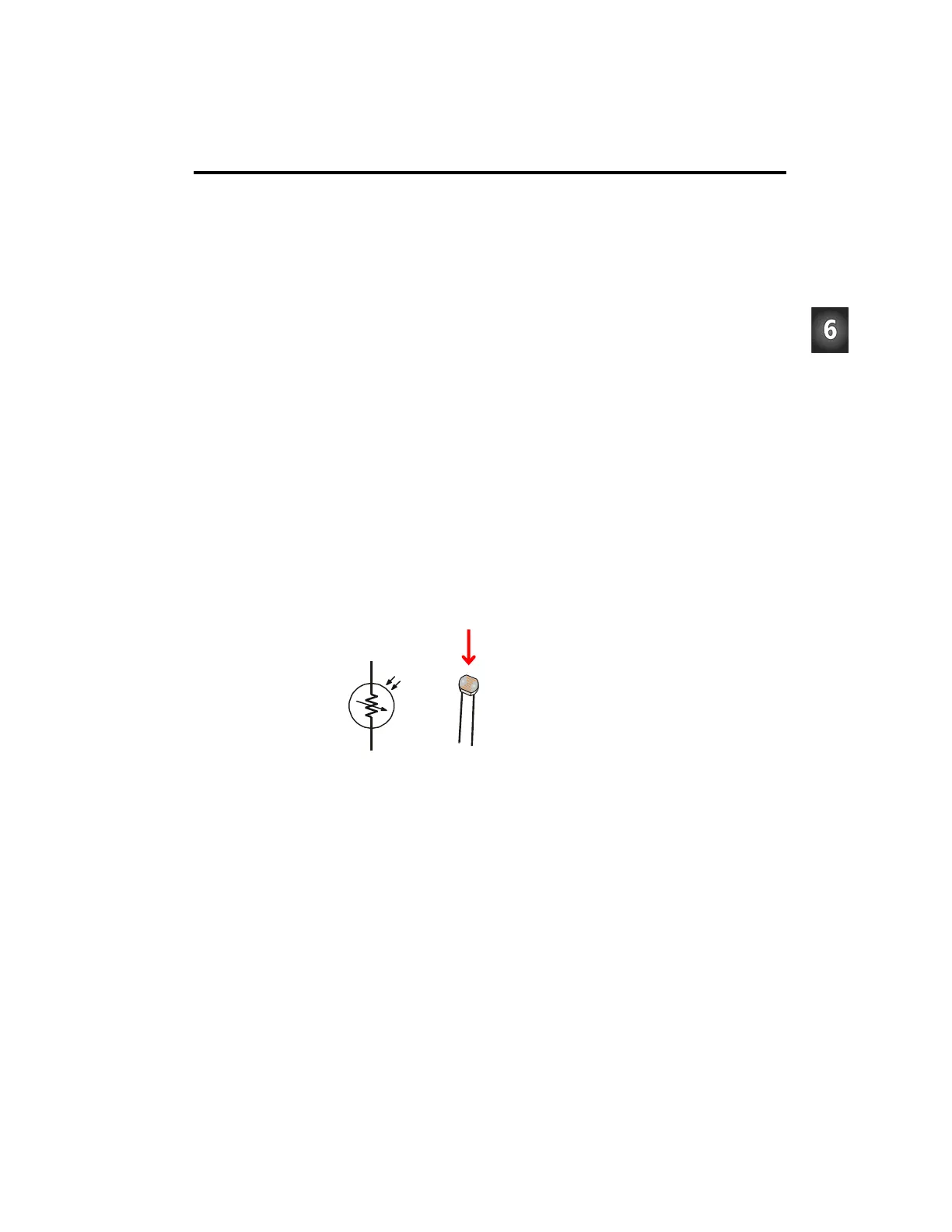Chapter 6: Light Sensitive Navigation with Photoresistors · Page 193
Chapter 6: Light Sensitive Navigation with
Photoresistors
Light has many applications in robotics and industrial control. Some examples include
sensing the edge of a roll of fabric in the textile industry, determining when to activate
streetlights at different times of the year, when to take a picture, or when to deliver water
to a crop of plants.
There are many different light sensors that serve unique functions. The light sensor in
your Boe-Bot kit is designed to detect visible light, and it can be used to make your Boe-
Bot detect variations in light level. With this ability, your Boe-Bot can be programmed
to recognize areas with light or dark perimeters, report the overall brightness and
darkness level it sees, and seek out light sources such as flashlight beams and doorways
letting light into dark rooms.
INTRODUCING THE PHOTORESISTOR
The resistors you worked with in previous chapters had fixed values, such as 220 Ω and
10 kΩ. The photoresistor, on the other hand, is a light dependent resistor (LDR). This
means that its resistance value depends on the brightness, or illuminance, of the light that
shines on its light detecting surface. Figure 6-1 shows the schematic symbol and part
drawing for the photoresistor you will use to make the Boe-Bot able to detect variations
in light levels.
Figure 6-1
Photoresistor Schematic and
Part Drawing
Light detecting
surface

